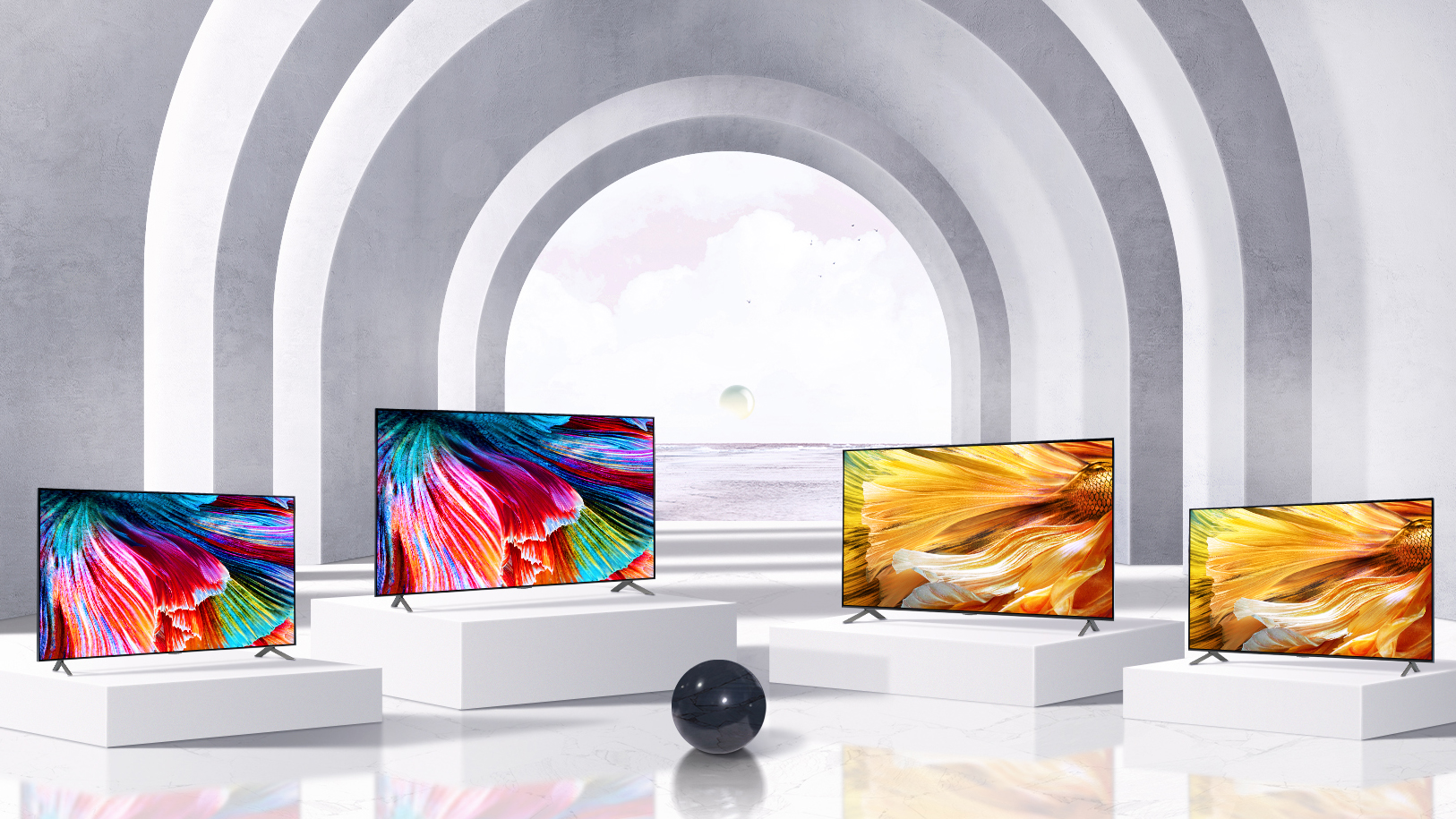LG's Mini LED TV range of 'QNED' screens is starting to roll out worldwide, bringing the company's exciting new combination of NanoCell LCD and Mini LED backlighting to the world for the first time. But what even is QNED, and should you pay it any attention?
The main confusion here is that QNED sounds a lot like… every other TV acronym. The name is very similar to Samsung’s QLED (quantum light-emitting diode) panels, found in the latest new Samsung TVs, and – like Samsung’s QLED – also refers to LCD technology rather than, say, OLED or MicroLED.
It’s especially confusing given LG and Samsung are such close competitors. Whereas Samsung is the world’s biggest TV maker, LG is somewhat close behind, and the two TV brands are often cited in the same sentence, especially in questions of the best TV to buy.
QNED and QLED are so similar that the occasional mixup or mistake feels inevitable, and we can’t help but feel that LG could have done more to differentiate itself – unless, of course, it planned to trade on consumers’ existing familiarity with Samsung’s TV tech.
If you want to know what a QNED TV actually is, and what marks it out from other LG TVs – or Samsung TVs – this is the guide for you.
What is QNED?
The term QNED is an amalgamation of the word 'Quantum', LG's 'NanoCell' LCD branding, and the 'Emitting Diodes' used in its backlight. That's a Q, an N, an E, and a D.
Spefically, QNED makes use of 30,000 miniscule LEDs used in its backlight, far more than the number found in its existing LCD TVs.
That’s because QNED uses what’s called Mini LED technology – a kind of backlight that uses a large number of very small LED lights to control brightness and create effective contrast between different areas of the screen. LG’s QNED TVs also boast 2,500 dimming zones to limit blooming and ensure light is directed where it should across your screen.
This Mini LED tech is also seen in the TCL's 6-Series and 8-Series QLED TVs, and Samsung is expected to announce its own product line imminently.
LG says its new backlight “comprises up to almost 30,000 tiny LEDs that produce incredible peak brightness and a contrast ratio of 1,000,000:1 when paired with up to 2,500 dimming zones and advanced local dimming zones.”
The contrast and brightness control is meant to be similar to that of OLED, given the number of LEDs in play. OLED panels can turn off individual pixels entirely, leading to its so-called ‘infinite’ contrast ratio between bright highlights and deep blacks. It’s not an OLED beater, but should still elevate the performance of LG’s current NanoCell LCD TV range.
The backlight won’t be the only factor determining whether your TV is any good, though – and it’s notable that half of LG’s new QNED TVs use its highest-spec TV processor, the a9 Gen 4 AI, while the other half use a lower-spec a7 model. So a TV having ‘QNED’ or ‘Mini LED’ plastered on it won’t automatically mean it’s getting the best specs across the board.

What QNED TVs can I buy?
LG has unveiled four QNED TVs so far in its LG TV 2021 range, under its NanoCell branding: the QNED99, QNED95, QNED90, and QNED85. The first two are 8K TVs, and the latter two are 4K TVs – but all are available in 65-inch and 75-inch sizes, with an additional 86-inch size for the QNED99 and QNED90.
They vary slightly in the motion rate of its panel (60-120Hz), while the 4K models make do with a mid-spec a7 Gen 4 AI processor rather than the premium a9 Gen 4 AI chip used in the 8K models and most of LG’s new OLED sets for this year.
Exact pricing is TBA in most regions, but we know that the screens will start at AU$4,799 (likely around $2,400 / £2,400) in Australia, and go up to AU$10,799 (likely around $5,000 / £5,000) for the largest, most premium 8K model.
What about OLED?
The introduction of QNED is especially interesting given LG’s penchant for OLED TVs. The TV maker releases some of the best OLED TVs out there, such as the hugely popular LG CX OLED we saw in 2020 (and which has got a C1 successor for 2021).
LG stresses that QNED will sit below its OLED range, rather than replacing or superseding it, but it’s clear that the company wishes to strengthen its LCD offering so as not to lose out to Samsung and others – given not everyone is sold on OLED TV tech.
LG seems to have put a pin in its B Series OLED, replacing the range with a new A Series budget OLED – so we expect the combination of low-spec OLEDs and high-spec LCDs will start to close the gap between LG’s different product categories, even if the LG C1 and LG Gallery Series OLED should still comfortably outpace their QNED competition.
- LG TV 2021 lineup: every OLED, Mini LED, and NanoCell TV coming this year
No comments:
Post a Comment